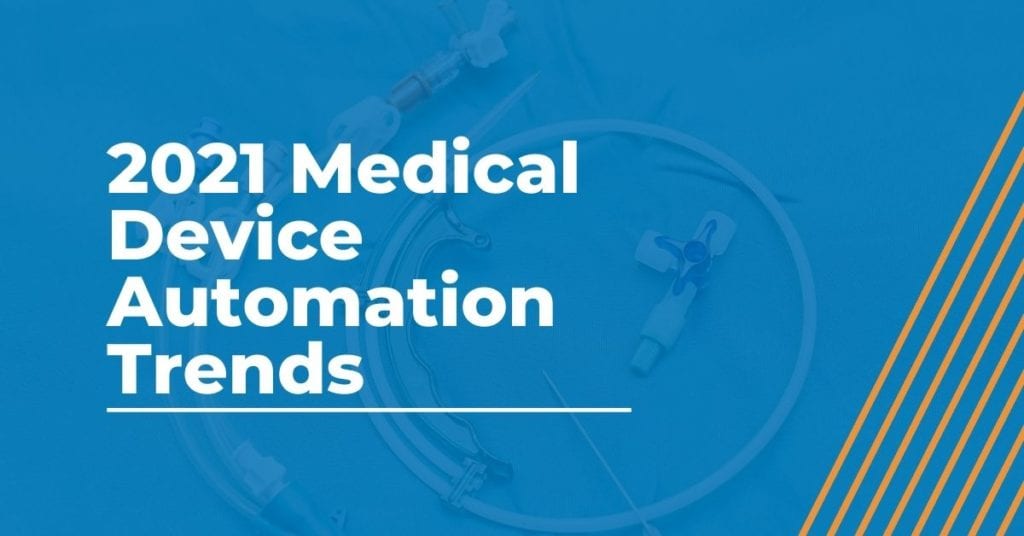
Medical Device Automation: New Trends For 2021
Effective leak testing is literally a matter of life or death in the medical device industry. Medical devices separate body fluids or deliver precise dosage of medicines. Given the stringent needs for accuracy, medical device manufacturers need to develop processes that are foolproof to ensure that each and every medical device performs precisely as intended. Here are some other current trends in medical device automation:
COVID-19 Creates Supply Shortages
COVID-19 blindsided much of the world. Without warning, the medical supply chain was in crisis. Catheters and IV sets were among the devices in short supply.
Catheters and IV sets form barriers between fluids and the body. Patients are protected by these barriers. Some products, like catheters, provide a route for a liquid, like urine, to exit the body. Other devices, like IV kits, provide a pathway to deliver medicines, like chemotherapy, to a patient.
If the barriers provided by these devices are breached, fluids or medicines might enter the wrong part of a body and injure a patient.
Manufacturers Respond to Production Pressures
Manufacturers were challenged to increase production rates so that medical personnel would have resources available to save as many lives as possible. They needed processes that were reliable, repeatable at scale, and fast. Pressure decay or mass flow testing is frequently used to perform quality checks of medical equipment. Automated leak detection can improve production rates.
Telemedicine Skyrockets
Just as the pandemic drove an increase in telemedicine, there has been a concurrent demand spike for medical devices that can monitor patients remotely. These devices include remote blood glucose monitors and smart medical alert systems.
Expansion of Qualified Raw Materials
The complexity of medical devices is increasing. Designs have become more complex and medical devices now include a wider variety of engineered plastics. This trend is driving medical manufacturers to look for ways to reduce material costs while also trying to accelerate the manufacturing process. Automation frequently achieves both goals.
Design Innovations Improve Device Safety
Because of advances in product design and material choices, medical manufacturers can now produce medical devices that provide increased safety for both patients and caregivers.
Manufacturers frequently use a class of polymers, like Parylene, to coat electronic devices. This class of polymers also works for biomedical devices. Preventing bio-corrosion, which can occur when a device has ongoing contact with either human skin or body fluids, is a benefit this class of polymers offers.
Automation Mitigates Labor Shortages
The gap between available positions and available trained workers with the necessary skill set to perform complex manufacturing jobs is well-documented. Although investing in worker training is one way to combat this issue, automation reduces the number of required skilled workers.
Automation also facilitates rapid manufacturing changeovers from one medical device product line to another product line.
Startups Entering Medical Device Industry
Limited resources are a hallmark of the startup industry. As more and more startups enter the medical device industry, they are looking for reliable testing methods that have a small footprint. This may incentivize startups to use nitrogen leak testing.
Robots External and Internal
Clinicians frequently use technology to dispense medical treatment, like using a Gamma Knife system to administer radiation for brain tumors. Minimally invasive surgical procedures, like laparoscopic surgery, rely on robotic assistance.
Recent technological advances led to the creation of microbots that are programmed to treat specific illnesses. These minuscule robots are small enough to be contained within a pill and swallowed.
Wearable Devices for Medical Monitoring
Wearable devices have evolved far beyond ubiquitous fitness trackers. The medical industry now relies on wearable devices to monitor the health of patients. Biosensors, like those that can monitor fluids and oxygen levels, can provide an ongoing datastream to help medical practitioners remotely monitor the welfare of their patients.
Artificial Intelligence
Advances in artificial intelligence (AI) are enhancing medical diagnosis and treatments. AI can also be leveraged to develop personalized medicine that will customize treatment plans for each individual patient.
Interested in Medical Device IFU trends?
The Definitive Guide to IFU for Medical Devices is a great resource for emerging trends in medical device regulations. Check out this knowledge-based article from Instrktiv to learn more about new EU and US regulations and how to the increased need for safety, effectiveness, and efficiency has changed in 2021.
Leading Medical Device Automation
As a medical device manufacturer, have you discovered the benefits of automated processes? Would you like to know more? Contact us for a free application review.
Our Automated Medical Manufacturing White Paper Will Help You Envision New Ways of Operating
Reading this white paper will help you:
